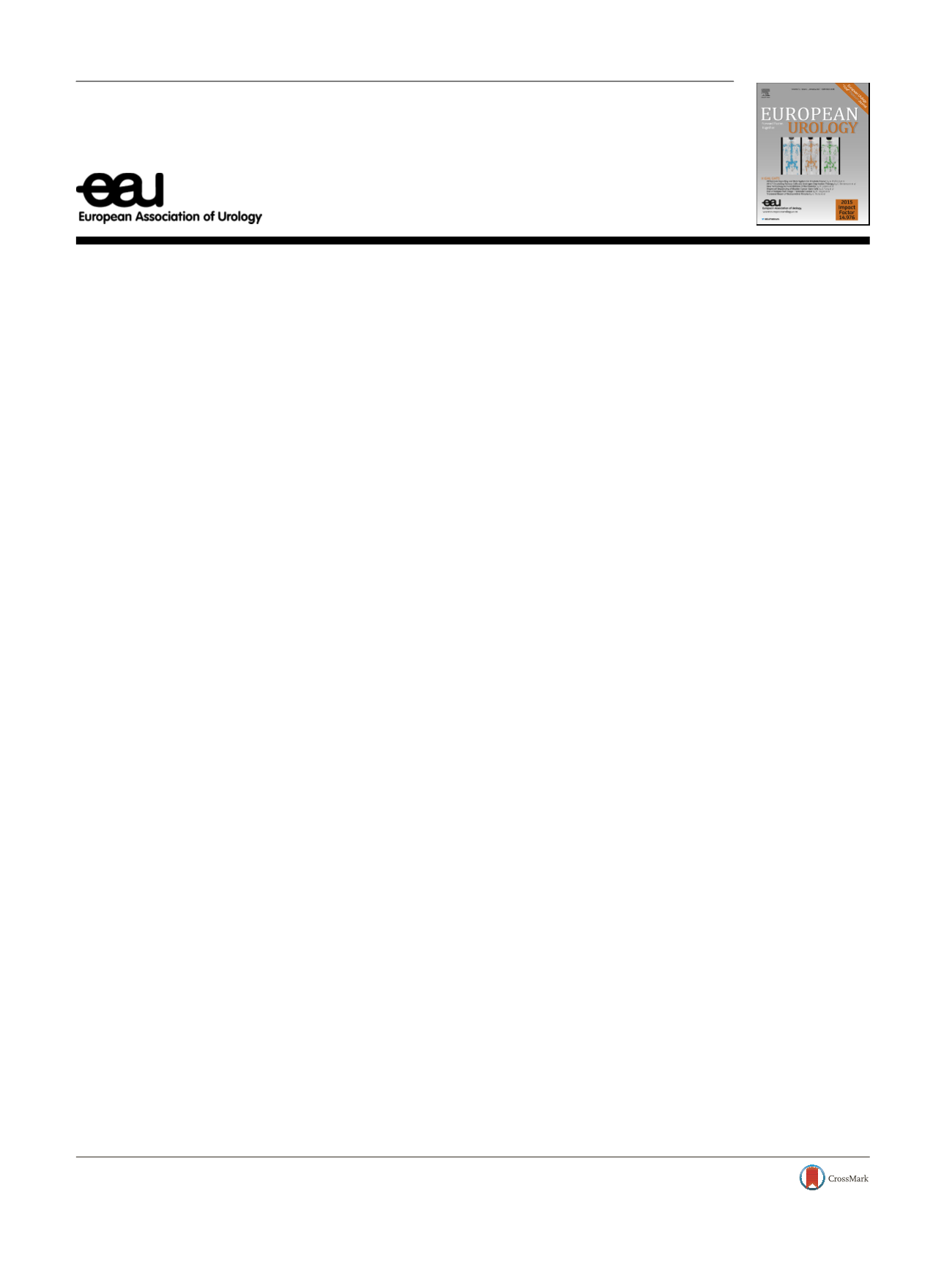

Platinum Priority
[1_TD$DIFF]
– Editorial
Referring to the article published on pp. 760–763 of this issue
Prostate Cancer Grade Groups Correlate with Prostate-specific
Cancer Mortality: SEER Data for Contemporary Graded Specimens
Jonathan I. Epstein
*Departments of Pathology, Urology, and Oncology, The Johns Hopkins Medical Institutions, Baltimore, MD, USA
In 2013, Epstein and colleagues at Johns Hopkins University
proposed a novel prognostic risk category grade grouping
for prostate cancer
[1]. Unlike Gleason scores, the grade
groups use a scale from 1 to 5, and tumors with the most
favorable features (Gleason score 6) are referred to as
grade group 1. Subsequently, the new grade group system
was validated in a multi-institutional study including
20 845 consecutive men treated with radical prostatectomy
at five large academic centers, and 5501 men treated with
radiation therapy at two centers. In the surgery cohort, the
5-yr biochemical recurrence (BCR)–free survival based on
prostatectomy grade was 96% for grade group 1 to 5, 88% for
grade group 2, 63% for grade group 3, 48% for grade group 4,
and 26% for grade group 5
[2] .[2_TD$DIFF]
Assigning a risk of 1 to
Gleason score 6, the relative risk of progression was 2.6 for
grade group 2, 8.5 for grade group 3, 16.8 for grade group 4,
and 29.3 for grade group 5. Grade groups were also
validated on biopsy and correlated with risk of biochemical
progression after radical prostatectomy and following
radiation therapy. The strengths of this validation study
included multi-institutional and international data, the
largest contemporary follow-up study after radical prosta-
tectomy yet assembled, and similar methods for evaluating
and processing specimens by urologic pathologists.
Following these initial studies, numerous efforts have
validated the new grading system using similar surgery
and radiation cohorts
[3–7] .The major limitation of all the
above studies was the use of prostate-specific antigen BCR
as an endpoint as opposed to cancer-related death. This
limitation was unavoidable, as the modified Gleason
system was first introduced in 2005 and there was
insufficient follow-up length relative to the number of
cases studied to have enough cancer-related deaths for
meaningful analysis. A unique study to look at the five-
tiered grade groups was carried out by Berney et al
[8]using
the Transatlantic Prostate Group cohort; the study
demonstrated that the five grade groups also correlated
well with death due to prostate cancer among 988 men
treated with watchful waiting. As noted by the authors,
there were inherent weaknesses in this study, as cases were
included from as far back as 1990. The diagnosis and
treatment of prostate cancer during the time period of this
study were very different to current practice, such as the
use of sextant core biopsy as the most common biopsy
technique. However, the advantage of using these older
cases was that there was sufficient follow-up for the study
to assess death from prostate cancer.
In this issue of
European Urology
, He et al
[9]also
demonstrate that the new five-tiered grade grouping
correlates with prostate cancer–specific mortality using
population-based Surveillance, Epidemiology, and End
Results (SEER) data for 331 320 men. As with the Berney
study, there are limitations and strengths of SEER data
analysis. He et al correctly chose 2006 as the starting date
for their study, as prostate cancer grades assigned before
the International Society of Urological Pathology (ISUP)
consensus conference in 2005 cannot be assumed to be
accurate. In particular, many cases of Gleason score 6 graded
before 2005 would be currently graded as Gleason score 7,
since the definition of Gleason pattern 4 changed in
2005. The weakness acknowledged by He et al is that their
study is based on pathology reports from multiple
institutions, with the vast majority of these lacking urologic
pathology expertise. This shortcoming is evident from the
E U R O P E A N U R O L O G Y 7 1 ( 2 0 1 7 ) 7 6 4 – 7 6 5available at
www.scienced irect.comjournal homepage:
www.europeanurology.comDOI of original article:
http://dx.doi.org/10.1016/j.eururo.2016.11.031.
* The Johns Hopkins Hospital, Room 2242, The Weinberg Building, 401 N. Broadway Street, Baltimore, MD 21231, USA. Tel. +1 410 9555043;
Fax: +1 443 2873818.
E-mail address:
jepstein@jhmi.edu . http://dx.doi.org/10.1016/j.eururo.2016.12.0140302-2838/
#
2016 European Association of Urology. Published by Elsevier B.V. All rights reserved.
















